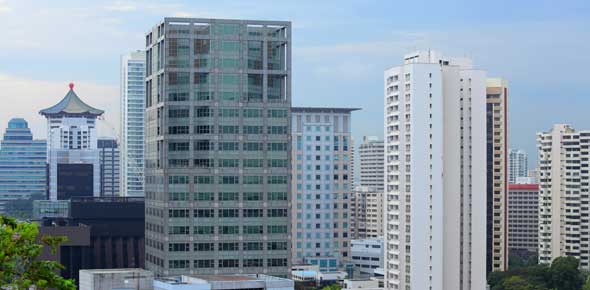Hollow masonry unit, with two or three cells or cores,made of the...
Plastering is done according to two basic methods: two-coat and...
Specially processed to give certain specific surface characteristics....
The bricks are laid diagonally to form a herring-bone pattern.
Astering is done according to two basic methods: two-coat and...
These are ordinarily made from amixture of flint clay and plastic...
A continuous layer of bricks, stones, or other masonry units.
Are structural units of clay or shale formed while plastic and...
________ is lightweight block made fromfiber and cement. “DURISOL”...
Consists of alternate courses of stretchers and headers
Gypsum plaster mixed on the job with water, perlite, vermiculite...
is highly decorative type of plaster work developed in Italy...
The corner stones at the angles of buildings, usually rusticated so as...
Courses of stone face of which is jagged picked so as to present...
__________is a mortar of cementitious material (lime, gypsum or...
A brick or block masonry laid lengthwise of a wall.
A course in which the bricks or other masonry units are all headers
Concrete block walls should have a reinforced concrete ________course...
A brick or block masonry extending over the thickness of the wall.
Reinforcement for 100mm (4”) and150mm (6”) wall concrete...
Gypsum plaster mixed with other ingredients to develop small...
Bricks that Used for all purposes, including facing.
Masonry of rough, undressed stones. When only the roughest...
_______ is a proportioned mixture of siliceous materials (sand,...
_________ is mortar applied to wall surfaces as a preparation or a...
Plastering is done according to two basic methods: two-coat and...
These have a smooth outer surface with a dull satin or high gloss...
Is cement mix used to glue masonry units to each other, or other...
The horizontal surfaces on which the stones or bricks of walls lie in...
Stones fitted together at random withoutany attempt to lay them in...
That connection between bricks, stones or other masonry units formed...
Squared stones in regular courses, in contradistinction to rubble...
Each continuous, vertical section of the wall, one masonry unit thick.
Consists of alternate headers and stretchers in each course
Stones running through the thickness of the wall at right angles to...
Lime putty (hydrated lime and water). Mixed on the job with sand and...
In Portland cement plaster ,The second coat is the finish coat. The...
A unit laid on its end with its face perpendicular to the face of the...
Gypsum plaster premixed with fibers. Mixed on the job with water...
For ornamental plaster work and castings. Mixed with water as...
Consists of five stretcher courses and then a header course. It...
Mixed with water, sand and lime putty. Used for two and three-coat...
Plaster of Paris mixed with clay, lime and other materials...
For 8” walls, reinforcement shall be ½”∅ vertical bars at...
Gypsum plaster mixed with fine white sand. Used for two and...
150 mm x 200 mm x 400 mm (6” x 8” x 16”) Load Bearing Concrete...
Same as gypsum plaster but mixed to meet established standards....
Plaster of Paris mixed with alum or borax or other materials andburned...
Plaster For ornamental plaster work and castings
defines the aggregates used in concrete masonry units.
are hollow masonry units, open at two ends withinterior webs or...
Lime putty (hydrated lime and water). Mixed on the job with sand and...
Also known as gypsum partition blocks, are usually made of gypsum,...
Gypsum plaster mixed with ingredients develops more adhesivestrength...
















